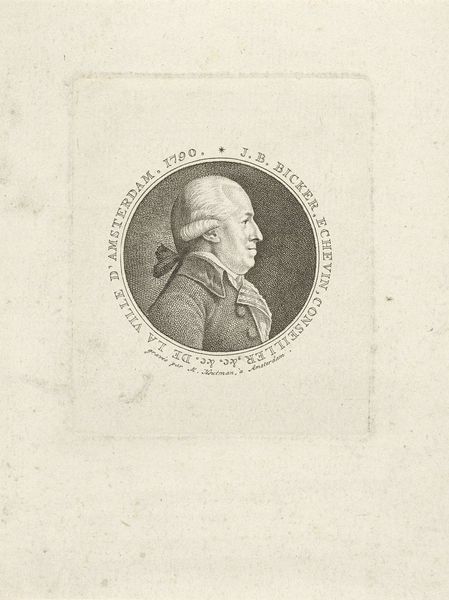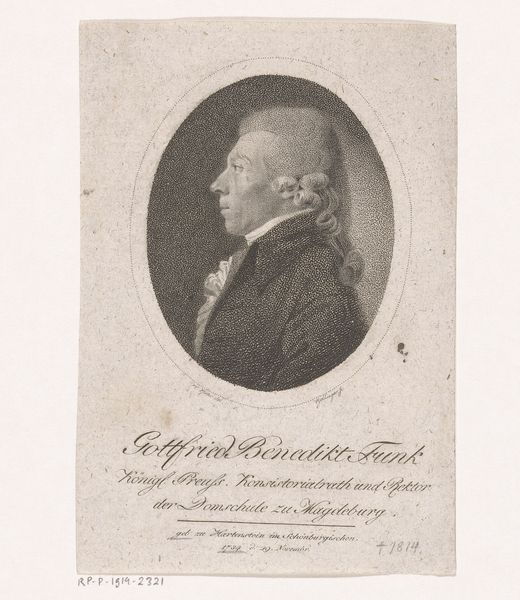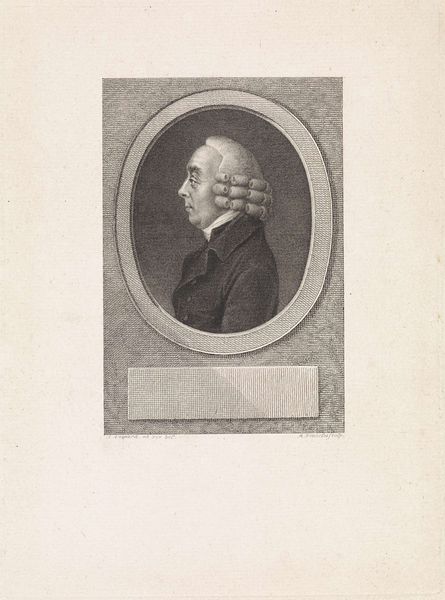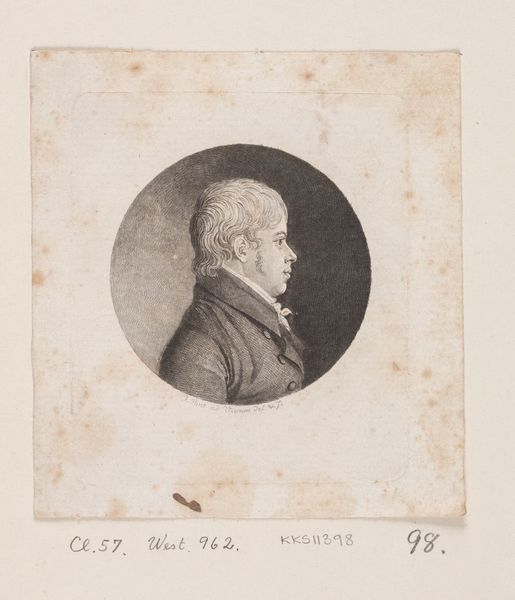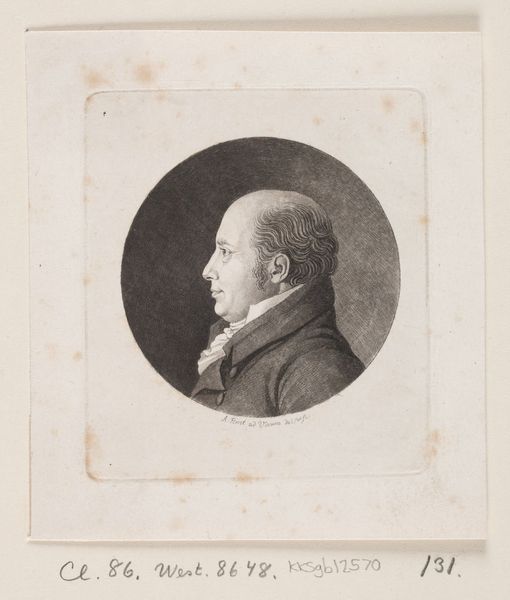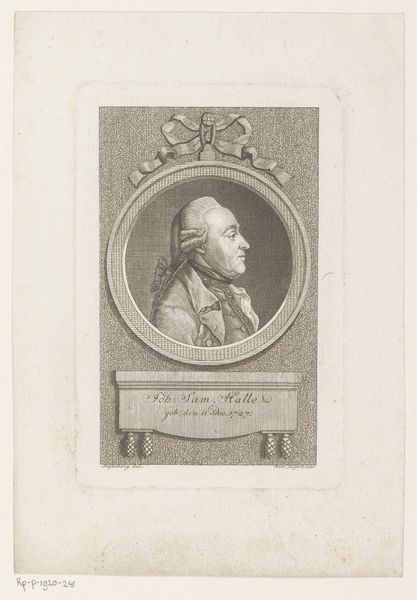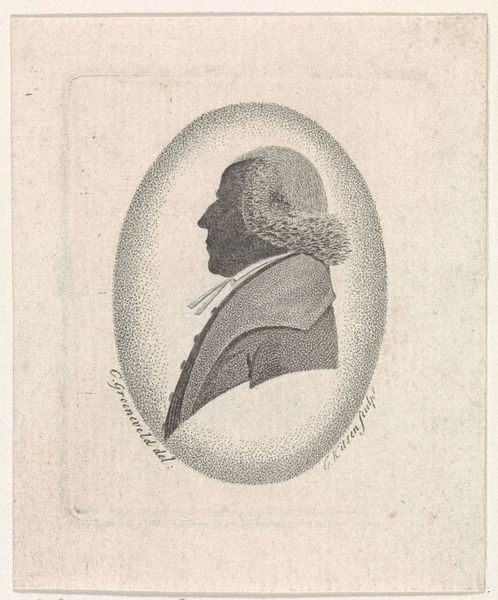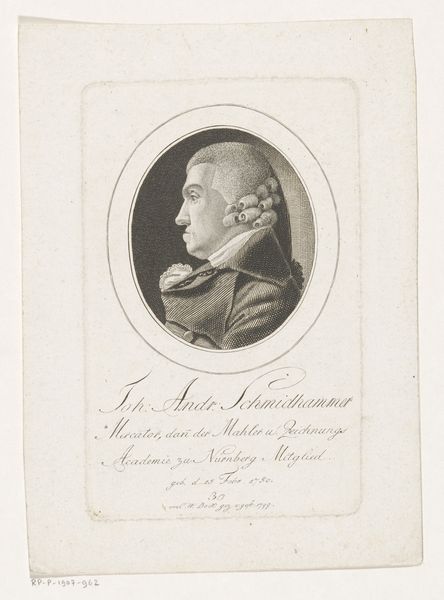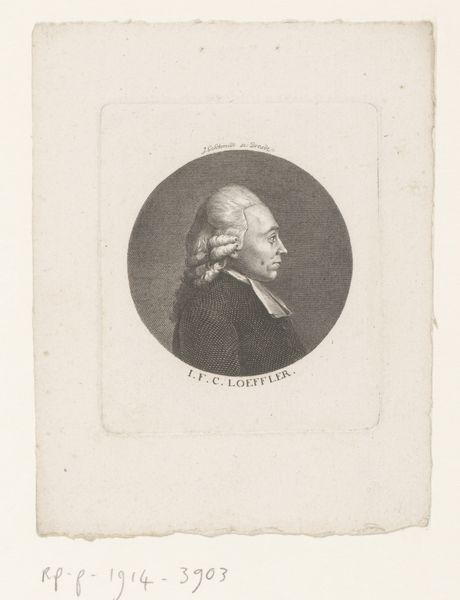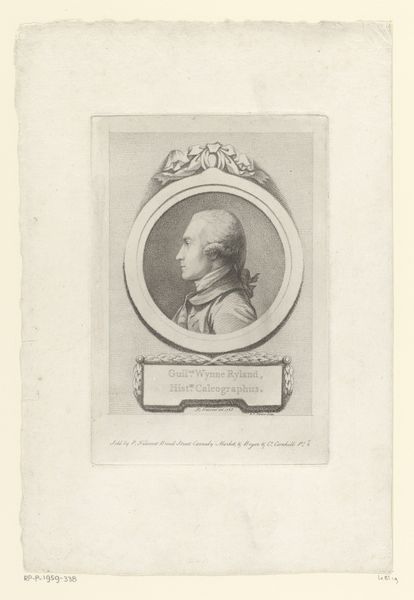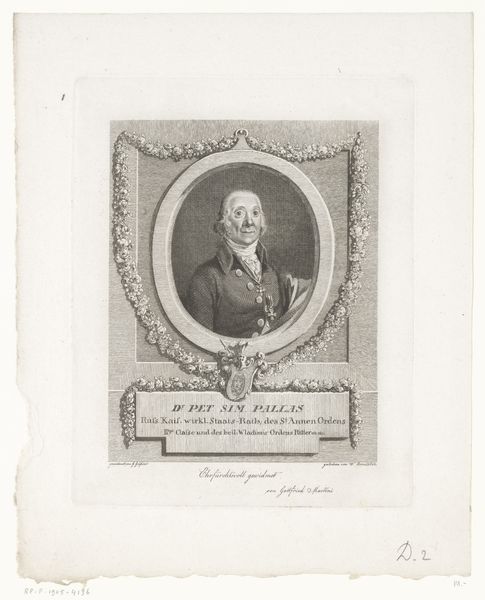
print, etching, engraving
#
portrait
#
pencil drawn
#
neoclacissism
# print
#
etching
#
pencil sketch
#
old engraving style
#
pencil drawing
#
engraving
Dimensions: height 94 mm, width 68 mm
Copyright: Rijks Museum: Open Domain
Editor: So here we have a print titled "Portret van Jan Bernd Bicker, op 44-jarige leeftijd," dating back to 1792, by François Joseph (I) Pfeiffer. It looks like an etching or engraving. It feels so formal, almost like an official document. What's your take on this, coming from a historical perspective? Curator: The formality is definitely intentional. Prints like this circulated widely in the late 18th century and played a key role in constructing and disseminating images of power and status. Consider the context: the rise of a mercantile elite in the Netherlands, and the growing emphasis on individual achievement and public virtue. Editor: So, this wasn't just about documenting what Jan Bernd Bicker looked like. Curator: Exactly. Think about how Bicker is presented: in profile, a format associated with Roman emperors, with inscriptions proclaiming his age. These weren't objective likenesses but carefully crafted representations that spoke to specific social and political ideals. Who controlled the narrative? Who commissioned and consumed images like this? What was Bicker’s position in society at that time? Editor: That makes sense. So the print functions almost as a form of social media of the time, building Bicker's brand, perhaps? Curator: Precisely! The portrait itself also has a symbolic charge. Details like his wig and attire would have signaled his position within a specific social hierarchy. It highlights the artist's etching skill but also subtly enforces societal power dynamics. Editor: I hadn't considered the image as constructing a social position. It's fascinating how much an image like this could communicate beyond just physical appearance. Thanks for helping me see this print within its historical framework. Curator: My pleasure! Understanding these prints requires decoding their visual language and understanding the socio-political climate in which they were created and circulated.
Comments
No comments
Be the first to comment and join the conversation on the ultimate creative platform.
